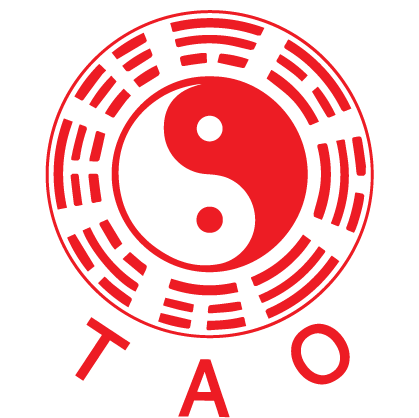
This post explains how Tung Shing, a Chinese divination guide and almanac, is used to select an auspicious date for events in traditional Chinese culture.
There are several versions of Tung Shing available from different publishers. However, for reference, we use the edition published by “廣經堂,” one of the most popular versions in Hong Kong. We assume readers have a copy of the “廣經堂” Tung Shing and a basic understanding of the Chinese language, as the content is written in Chinese.
Tung Shing includes lunar calendar dates and indicates whether certain events are suitable or unsuitable for each day to ensure optimal outcomes. Examples of such events include weddings, business openings, requesting divine blessings, traveling abroad, and more.
Event Table
| Event Name in Chinese | Event Name in English |
|---|---|
| 嫁娶 | To get married |
| 祭祀 | Sacrifice ceremony |
| 理髮 | Haircut |
| 會友 | Meeting with friends |
| 出行 | Travel |
| 開市 | Start of business |
| 入宅 | Moving into a new house |
| 動土 | Groundbreaking or earthwork |
| 拆卸 | Disassembly (of building, structure, or furniture) |
| 安床 | Install a bed |
| 掃舍 | House cleansing |
| 納畜 | Bringing in livestock or pets |
| 安葬 | Burial |
| 移居 | Migration or relocation |
| 捕捉 | Hunting or catching animals |
| 交易 | Trade or commercial transaction |
| 立約 | Signing a contract |
| 入學 | Enrollment in school or studies |
| 訂婚 | Engagement |
| 栽種 | Planting |
| 作灶 | Installing a stove or kitchen setup |
| 醫病 | Medical treatment |
To select a suitable date—or avoid an unsuitable one—for an event during the Lunar Year, refer to the section typically found near the end of the Tung Shing. Each page in this section has a marker on the left edge indicating the lunar month. Find the month you’re planning to hold your event.
Lunar Month Translation
| Lunar Month (English) | Lunar Month (Traditional Chinese) |
|---|---|
| First month | 正月 |
| Second month | 二月 |
| Third month | 三月 |
| Fourth month | 四月 |
| Fifth month | 五月 |
| Sixth month | 六月 |
| Seventh month | 七月 |
| Eighth month | 八月 |
| Ninth month | 九月 |
| Tenth month | 十月 |
| Eleventh month | 十一月 |
| Twelfth month | 十二月 |
Once you’ve identified your target month, you’ll see a table outlining the lunar dates and information for each day. The top row usually shows the lunar date and weekday. Each column represents one day’s set of guidelines. For date selection, focus on the following three rows:
- Row 4 — 忌 (Avoid): All events listed beneath this character are considered inauspicious on that day.
- Row 6 — 宜 (Favorable): Activities listed below this character are suitable to perform on that date.
- No listing: If the event doesn’t appear under 忌 or 宜, it’s considered neutral and carries no strong significance.
Using these indicators, you can determine whether an event is auspicious, inauspicious, or neutral on any given date, according to Tung Shing tradition.
If you need a copy of Tung Shing, you may purchase it at our store.
本文說明如何運用《通勝》,在中國傳統文化中擇定適合舉行各種活動的吉日。
《通勝》的版本眾多,由不同出版社編撰。本篇文章以「廣經堂」所出版的《通勝》為參考,這是香港最廣為流傳的版本之一。本文假設讀者已擁有一本「廣經堂」版本的《通勝》,並具備中文理解能力,因為書中內容皆以中文撰寫。
《通勝》是一部中國傳統的曆法與擇日指南,記載農曆年間的每日宜忌事項,幫助人們挑選適合舉行特定活動的吉日,例如婚禮、開業、祭祀、出行等,以求順利圓滿。
活動對照表
| 活動名稱(中文) | 活動名稱(英文) |
|---|---|
| 嫁娶 | To get married |
| 祭祀 | Sacrifice ceremony |
| 理髮 | Haircut |
| 會友 | Meeting with friends |
| 出行 | Travel |
| 開市 | Start of business |
| 入宅 | Move to a new house |
| 動土 | Perform any work on the ground |
| 拆卸 | Disassemble (normally refer to building, parts of building or furniture) |
| 安床 | Install a bed |
| 掃舍 | Clean the house |
| 納畜 | To have a new pet/animal |
| 安葬 | Burial |
| 移居 | Migration |
| 捕捉 | Hunt/Catch animal |
| 交易 | To trade |
| 立約 | To sign a contract |
| 入學 | Start school/study |
| 訂婚 | To get engaged |
| 栽種 | To plant |
| 作灶 | To install cooker |
| 醫病 | To see a doctor |
若要在農曆年間挑選適合的吉日,或避開不宜的日子舉辦活動,請參閱《通勝》通常位於書末的章節。該章節每頁左側皆標示農曆月份,請先找到您計劃舉行活動的月份。
農曆月份中英對照表
| Lunar Month(英文) | 農曆月份(繁體中文) |
|---|---|
| First month | 正月 |
| Second month | 二月 |
| Third month | 三月 |
| Fourth month | 四月 |
| Fifth month | 五月 |
| Sixth month | 六月 |
| Seventh month | 七月 |
| Eighth month | 八月 |
| Ninth month | 九月 |
| Tenth month | 十月 |
| Eleventh month | 十一月 |
| Twelfth month | 十二月 |
當您找到所屬月份後,頁面上會出現每一天的相關資訊表格。第一行通常標示該日的農曆日期與星期。每一欄代表一天,顯示那天是否適合辦理特定活動。
實際操作時,只需注意以下三個重點判斷:
- 第四行「忌」:出現「忌」字的欄位下方所列活動代表當天不宜進行。
- 第六行「宜」:出現「宜」字的欄位下方活動代表當天適合辦理。
- 未出現活動名稱:若某活動未列於「忌」或「宜」之下,表示該活動於該日無吉凶影響,屬中性。
依據上述原則,即可判斷某日是否適合您計劃中的活動,這是《通勝》傳統擇日智慧的應用方式之一。
如您需要購買《通勝》,可前往本店選購。
